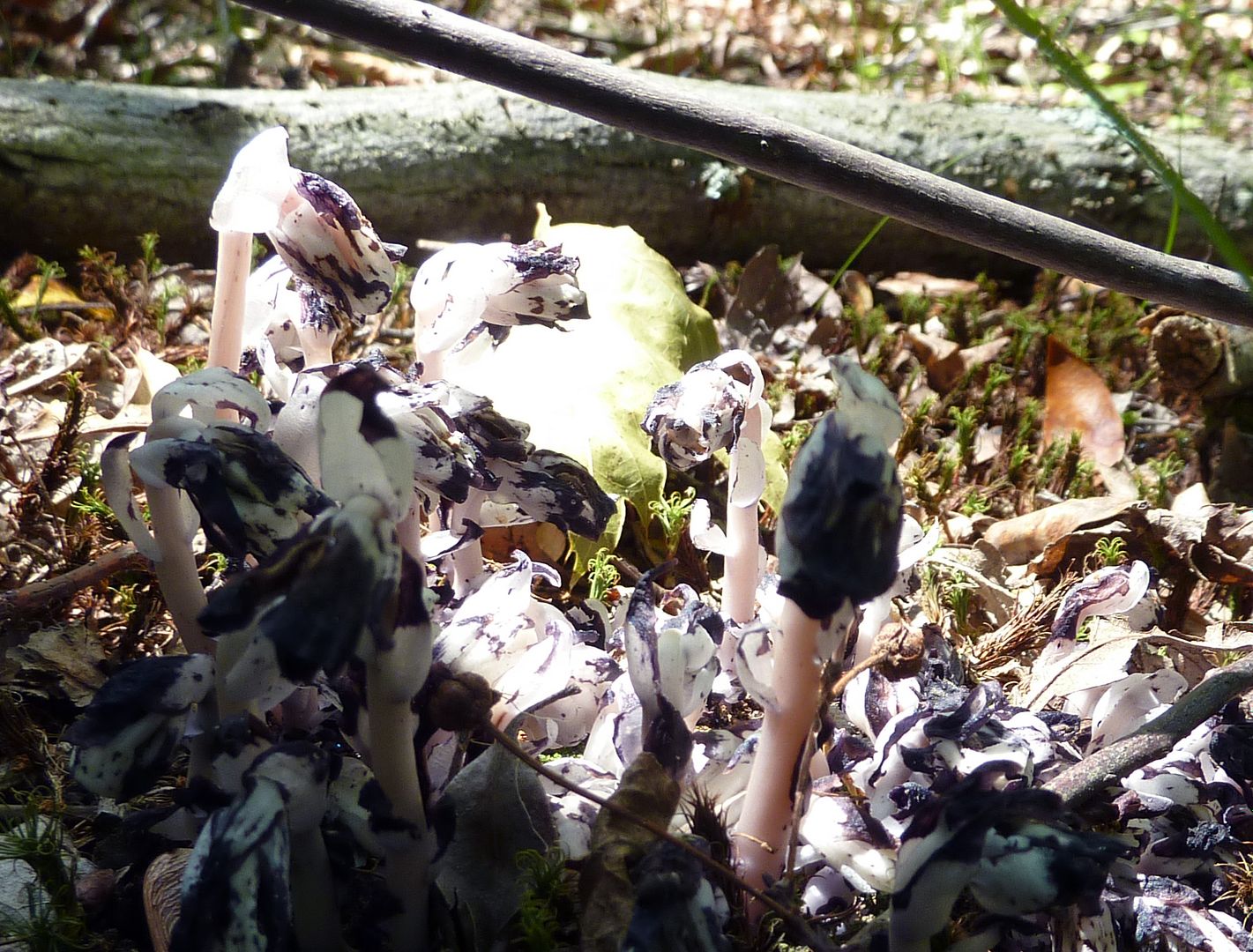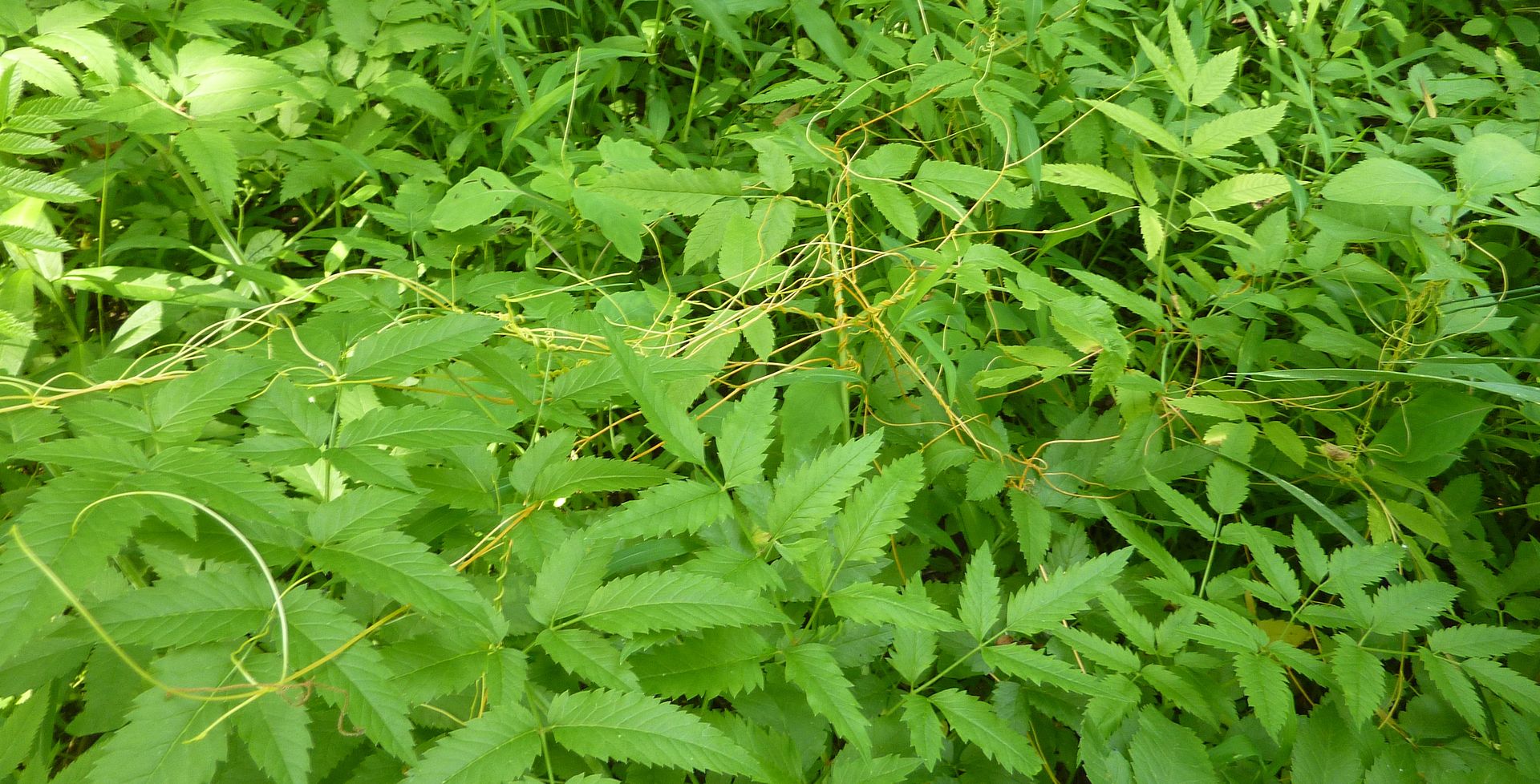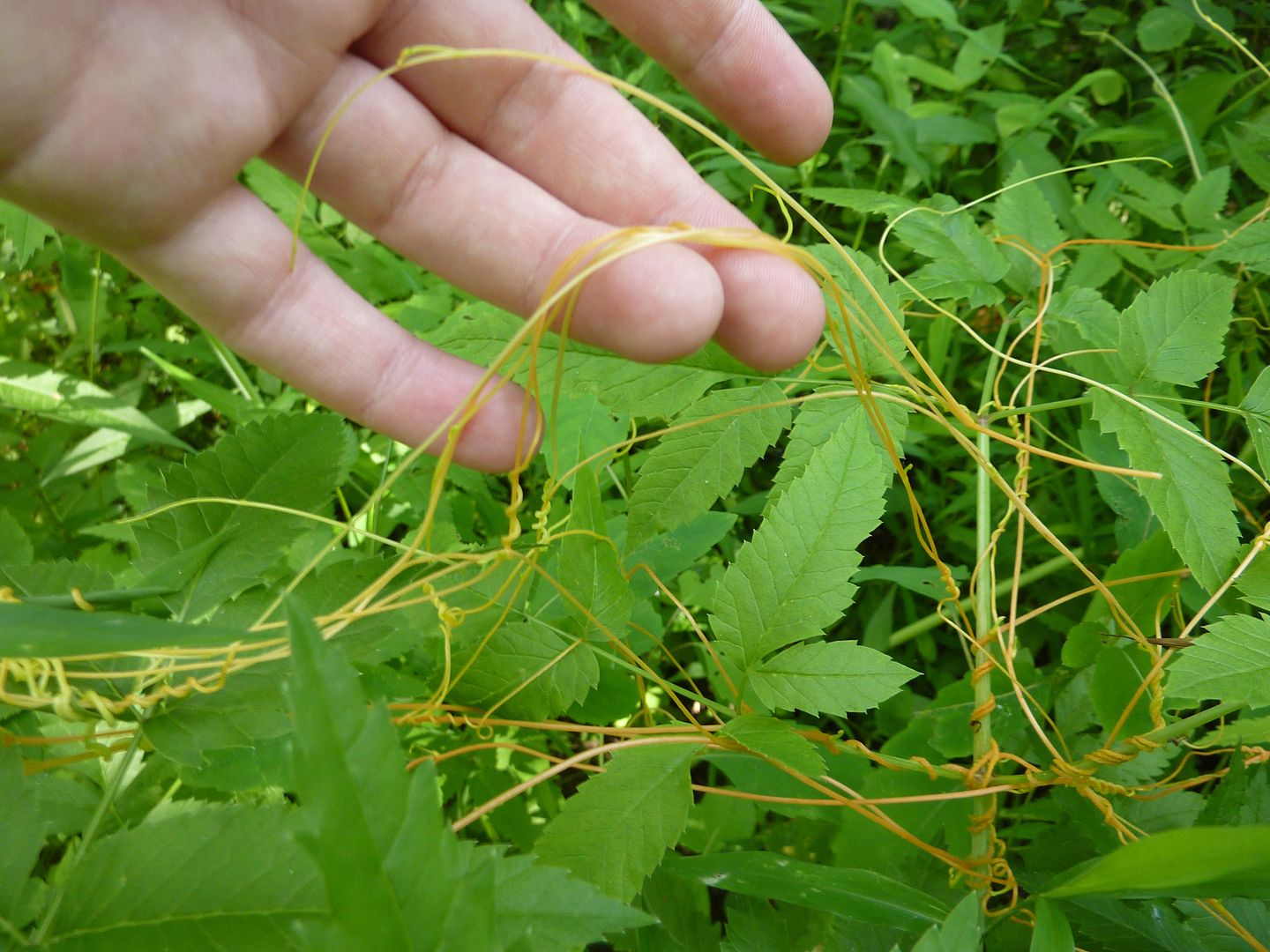Indian Pipe, Monotropa uniflora, is parasitic plant that emerges for only a few weeks over the summer. It's actually an "epiparasite" which is basically a symbiotic relationship between two parasites. Indian Pipe doesn't steal food directly from it's host tree, but rather produces nutrients that promote the growth of a certain kind of fungus that exchanges food with it. This makes transplanting all but imposable.
The plants I found were a bit past their prime. Normally they're an albino-ish cream color. They don't have chlorophyll or chloroplast so the flesh lacks the green or even brown color seen in other plants. Shortly after blooming seeds are quickly produced and the plant turns to a gooey black as they melt away.
I'm tempted to go back and collect seed if I can. And probably a soil sample to hopefully start a patch in my garden. They always grow in full shade, though this one was getting some afternoon sun. To read more about Indian Pipe and other wildflowers I recommend reading The Secrets of Wildflowers: A Delightful Feast of Little-Known Facts, Folklore, and History
This yellow string like plant is a Cuscuta species. It's a simple parasitic plant that grows as a series of tendrils. They wrap around the host and sap it of energy.
I honestly had no idea what it was when I found it. This is a neat group of plants. Wikipedia offers more information. So thanks to the folks at the Wildlife Gardeners forum for you help identifying.
A forest that can support populations of parasitic plants is a true sign of health. Sure they are parasites but such things rarely kill their hosts. They should be admired for taking advantage of a certain click in their ecosystem. The added diversity should be treasured.




